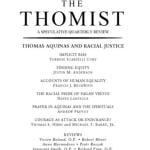I SWAN TO MAN: Some thoughts on the Matthew Bourne Swan Lake, as viewed via Netflix.
First, I loved this. It had a lot of images I want to stow away in my mental Mombi gallery of heads. The look of this production is iconic for a reason! The opening dream sequence replaces the “bright boy called Death” with a mature swan/man, in a little boy’s dreams–a really stunning, disturbing, enthralling image. Adulthood, aggression, masculinity, otherworldliness and the sublime are all offered as possible candidates for “the monster at the end of this book,” all shifting and iridescently fluid, identified with one another and yet distinguishable.
The intense longing conveyed in the park/lake scenes was especially fine and poignant, and I loved the eye-patched woman in the final “society” scene. I’ve never seen a traditional Swan Lake, so I don’t know to what extent matching the most iconic music to moments in which the lovers are parted or are yearning for one another is typical, but it was really amazing. The plangent, familiar music becomes eldritch when it expresses nightmare rather than dream, liminality rather than immersion.
I was strongly reminded of both the strengths and the weaknesses of Derek Jarman’s Edward II. The “looks” of the two productions are similar. The faint hint of misogyny is common to both–though much more prominent in the Bourne show because he has so few roles for women. Both Jarman and Bourne don’t present a madonna/whore dichotomy… more of a dictatrix/flapper dichotomy. (Did Margaret Thatcher really do so much psychological damage?) The roles for women in Bourne’s Swan Lake are as follows: 1) Maria Motherissueskaya, 2) Ditzie Doritos, 3) Butterfly Ballerinas whose art is cheap and obvious (unlike the subtle work we’re watching now!) and 4) Eyepatch of Awesome.
And the sense of thwarted erotic hunger is of course preeminent in both productions. Jarman’s work is much better because he chooses to express anger rather than self-pity, and politics rather than pop-psychology. Nonetheless if you are glad you saw his EII you should probably see this show too.
Speaking of pop-psychology, this production was really swilling the cliché. The swans are coming from beneath the bed! He looks at his reflection and drinks from a flask to demonstrate his pain! I’m really conflicted about this, since a) ballet, like opera (like horror, like genre in general), is already stylized and so cliche is always imminent, and
b) I’m pretty sure I fell in love with figure skating in large part because it married actual artistry so completely with vaudeville tawdriness, sawdust and stardust. (Oh, why not, here’s more Christopher Bowman.)
So if we’re simply mining pop-psych for immediately compelling, intelligible hieroglyphics of melodrama, then I support that 106%. (Not just 100%, because I am beyond reason.) But the Bourne production seemed to me to swing occasionally into self-seriousness, an attempt at actually representing the inner consciousness of a conflicted gay prince, and this I found a bit Oprah-ish or insistent.
And so we return to our sheep (or our feathers)–there are so many sequences of this production which I found amazing. I loved the drunken staggering outside the bar. I loved the pursuing-retreating-captured dynamic after the ball.
But let me end by comparing this disc, unfairly, to two live performances.
First: I don’t think I could have really understood this production before I became a fan of the Synetic Theater. Their provocative, intermittently tawdry, undeniably brilliant and idiosyncratic interpretations of classic works through dance helped me develop a modern-dance vocabulary. They were able to show me, as if teaching me sign language, how there is no one-to-one correspondence between dance and Shakespeare and yet a dance troupe can convey all the complexities and ornaments of Antony and Cleopatra. (This month their King Lear opens and I am LITERALLY JOE BIDEN bursting at the seams to see it!) Gestures aren’t words, and yet a dance sequence can be a paragraph.
And second… a few days after I saw the Bourne Swan Lake via Netflix, I saw the Mariinsky Ballet (if you remember Reagan then you, like me, may know them best by their Soviet-era name, the Kirov Ballet) perform “Giselle.”
Look, I know it’s not fair to compare the Mariinsky to anyone. And yet the shocking precision of their movements–despite a radically silly storyline, despite sequences in which the ballerinas had to hop across the stage–the grace and the illusion of effortless gliding were simply unparalleled. They took us into another dimension, another kind of consciousness (I KNOW how foo-foo I sound! I can’t think of any other way to put it!), simply through their razor-sharp control. Their technical prowess made them so alien that they didn’t have to rely on their interpretation of the story for sublimity.











